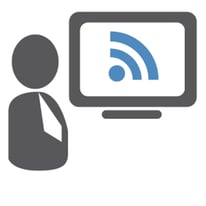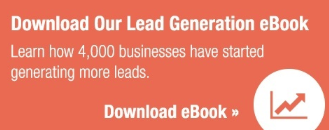It is never easy to replace a tried and true marketing method like newspaper or magazine ads with something that is new and unfamiliar.
While print ads have long held a cherished place in the marketing plans of most companies, there are a variety of inbound marketing techniques that can attract hordes of new customers and guide them through the sales funnel.

These inbound marketing techniques, which include search engine optimization (SEO), social media, blogs, calls-to-action and landing page design, are often more economical and effective because they find consumers who are already interested in your products.
The benefits of these inbound marketing tactics include:
- Low-cost—While you are probably spending a significant amount on newspaper, magazine and billboard buys, you could be spending only a fraction of that cost on digital marketing. Having a site on Facebook, creating a weekly blog or developing a keyword strategy is likely to cost less or the same as a print ad campaign, and, in many cases, the upfront costs on these inbound marketing techniques decline sharply as you gain proficiency.
- Higher penetration—Unless you are purchasing ads in national magazines, you are probably not reaching the largest possible market of potential customers. With inbound marketing techniques like SEO, you could find interested consumers on the other side of the world. Even if your business is primarily local, establishing yourself on a social media site or elevating your rank on Google local can dramatically broaden your reach to local consumers who are less familiar with you.
- Greater information—Blogs and social media techniques allow a more robust dialogue that provides your organization’s information to consumers, while you collect more information about consumers. Unlike a print ad or a radio commercial, where you can only share the most basic details of your product or organization, a blog or LinkedIn site can explain in detail how much your customers benefit from your existence. Customers also have the opportunity to express how much they appreciate you, or how you can improve your products in the next round of design.
- Stronger relationships—Unlike the one-way message of conventional outbound marketing, inbound marketing establishes lasting relationships through online communication. Using emails and social media to describe how your organization is working to meet customer needs better can stoke enthusiasm for your business. More importantly, your customers can detail what those needs are; an active community on your blog or social site can provide valuable insights that can elevate your marketing effectiveness.
- Personalization—All of your marketing channels can benefit from a strong inbound marketing component. As you collect more information about individual customers or market segments, you can create more effective emails or landing pages that are likely to produce conversions and quickly grab the attention of ideal customers. Personalizing your interactions with new or existing customers is likely to generate a positive response and maintain a lasting relationship.
Print media has its place in many marketing strategies, but with the advantages of low-cost, stronger responses and more agile marketing, inbound marketing is likely a better fit for your company.
If you would like to learn more inbound marketing techniques, download the lead generation ebook with data from over 4000 businesses below:






